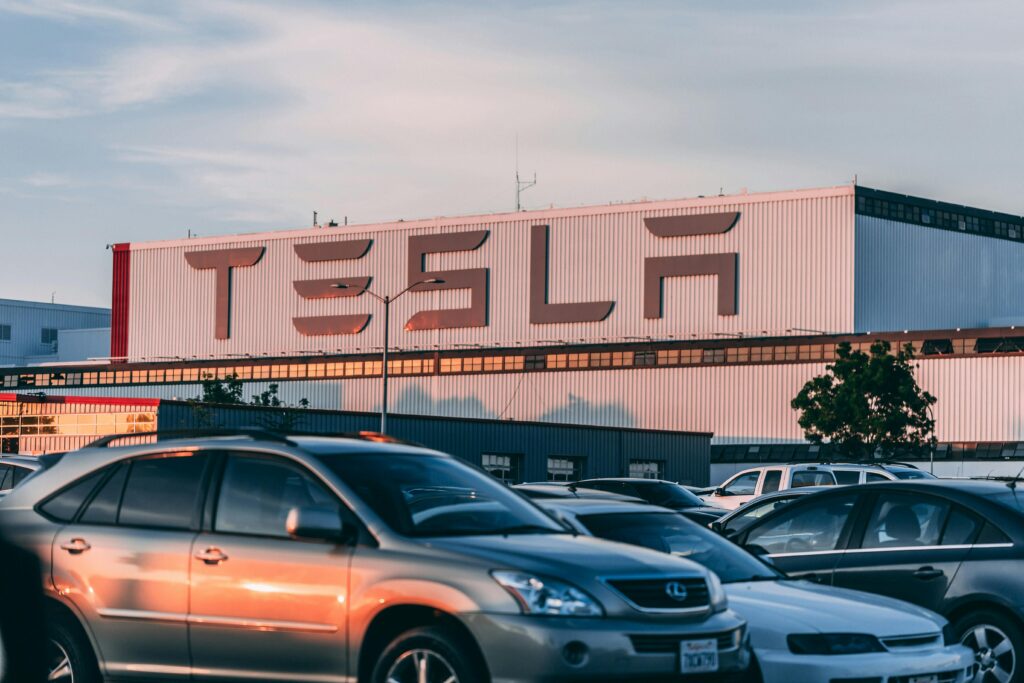Tesla Stock: Weak Fundamentals, Explosive Future Potential

Optimize Your Investment Strategy with AIDeep insights and actionable data to optimize investment strategies, giving you a significant edge in the market. Learn More |
Tesla has rarely been a company that sits still. Whether it’s revolutionizing electric vehicles, taking audacious leaps into space with Elon Musk’s other ventures, or experimenting with humanoid robotics, Tesla consistently pushes boundaries. But 2025 has brought a challenging chapter for the automaker. A sharp decline in earnings, mounting brand headwinds, and geopolitical friction are painting a grim short-term picture. Still, if you zoom out beyond the smoke and chaos, a potentially explosive upside emerges — one rooted in autonomy, robotics, and full-stack disruption.
Profits Down, Sentiment Down — What’s Dragging Tesla?
Let’s start with the fundamentals. Tesla’s Q1 2025 earnings report was a gut punch. Profits cratered over 70% year-over-year. Automotive revenue, the backbone of Tesla’s cash flow, slumped nearly 20%. For the first time in years, Tesla’s U.S. EV market share dipped below 50%. These are the types of numbers that rattle even the most diamond-handed investor.
Beyond the financials, Tesla’s brand is under siege. Over 50 reported attacks on Tesla cars, showrooms, and service centers in the U.S. alone have created a concerning narrative around public sentiment. In Europe and parts of Asia, sentiment has also cooled, with boycotts and vandalism linked to Elon Musk’s political affiliations and controversial statements. The Tesla brand — once a badge of innovation and eco-consciousness — is being politicized and weaponized in ways that are unfamiliar and unsettling.
So Why Aren’t Long-Term Bulls Panicking?
Because the broader Tesla thesis is about more than EVs — it’s about building an AI-first transportation and automation company. What Tesla is cooking behind the scenes could change the game entirely.
Robotaxis: Tesla’s Next Hypergrowth Engine
This summer, Tesla will roll out its first robotaxi pilot in Austin, Texas. These won’t just be test vehicles with safety drivers onboard — we’re talking fully autonomous Model Ys running under the Full Self-Driving (FSD) platform, with no one behind the wheel. If successful, this won’t just be a demonstration — it will be the first commercial manifestation of Tesla’s multi-year bet on AI-driven mobility.
This isn’t just about displacing Uber and Lyft. It’s about flipping the script on car ownership itself. Imagine a world where every Tesla is a revenue-generating asset. Where instead of your car sitting idle 95% of the time, it’s driving others around while you sleep, turning your $40,000 vehicle into a cash-flowing machine. That’s the promise of the Tesla Network. And with plans to allow Tesla owners to list their vehicles on the robotaxi platform by 2026, it’s inching closer to reality.
Cybercab and the Future of Purpose-Built Autonomy
Even more exciting, perhaps, is the unveiling of the Cybercab — Tesla’s first vehicle designed specifically for autonomy. No steering wheel. No pedals. Just a capsule for moving humans from point A to B. It will cost less than a Model 3, require no driver, and eventually achieve a cost per mile cheaper than public transportation. Tesla plans to begin production in 2026, and when that happens, the unit economics of ridesharing will be upended.
Optimus: The Dark Horse in Tesla’s Story
Then there’s the wildcard — Optimus. Tesla’s humanoid robot project seemed like a sideshow when first announced. But recent demos have turned heads. These aren’t just prototypes walking in circles. Optimus can fold laundry, sort objects, and execute basic warehouse tasks. While production has been hampered by China’s export restrictions on rare-earth magnets, Tesla expects to resolve supply chain issues and begin pilot production later this year.
If Tesla succeeds here, the implications are massive. We’re talking about a robot that can handle repetitive, dangerous, or mundane human labor. Every warehouse, factory, and retail operation becomes a potential Tesla customer. Optimus could quietly become Tesla’s most profitable vertical within a decade.
Betting Against Tesla Has Never Been More Tempting — or Risky
To be clear, the fundamentals right now are not pretty. Gross margins are down. Regulatory risks are up. Sentiment is shaky. But betting against Tesla has always been a short-term game. The company plays on a different clock.
If the robotaxi network scales, if Cybercab hits production, if Optimus finds product-market fit — then the 2025 sell-off might look like just another launchpad. The stock is priced for the old Tesla. But what if a whole new one is about to emerge?
As investors, we have to decide: are we looking at a wounded automaker… or the early innings of a robotics and autonomy revolution?
For long-term holders, this might just be the buying opportunity of the decade.
